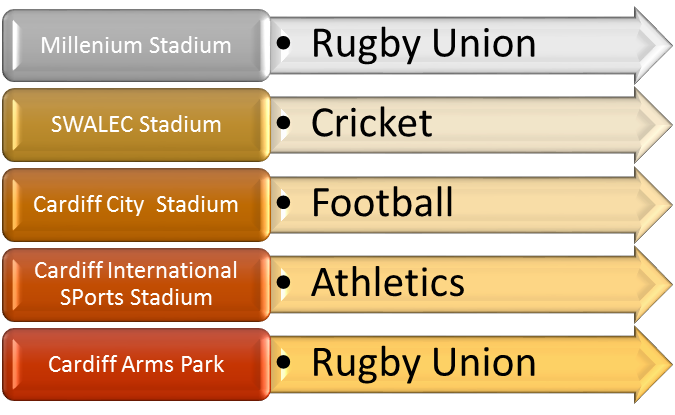Course Content
- Projects and Project Work
- The definition of projects, as opposed to other types of work
- Terms of reference for a project
- The purpose of project planning and control
- The typical activities in a system development life-cycle
- System and project life cycles
- Variations on the conventional project life cycle, such as the use of prototypes or an iterative approach (e.g. the creation and testing of a series of versions of a product that converge on the final deliverable) or incremental approach (i.e. the phased creation and delivery of a series of products to users)
- Implementation strategies e.g. parallel running, ‘sudden death’, use of pilots
- Purpose and content of business case reports; the utilization and significance of discounted cash flows in such reports (Note: knowledge of the method of calculation is NOT required)
- Types of planning document: project initiation documents; project and stage plans, quality plan, communications plan, risk plan
- Post implementation review
- Project Planning
- Project deliverables and intermediate products
- Work and product breakdowns
- Product definitions (including the identification of derived from, and component of relationships between products)
- Relationship between products and activities in a project
- Checkpoints and milestones
- Lapsed time and effort required for activities
- Activity networks (using ‘activity on node’ notation)
- Calculation of earliest and latest start and end dates of activities and resulting float
- Identification and significance of critical paths
- Resource allocation, smoothing and levelling, including the use of resource histograms
- Work schedules and Gantt charts
- Monitoring and Control
- The project control life cycle: including planning, monitoring achievement, identifying variances, taking corrective action
- The nature of, and the purposes for which, information is gathered
- Collecting progress information
- Timesheets,
- Team development meetings
- Error and change reports etc
- Presenting progress information
- Content of progress reports
- Graphical presentation of progress information e.g. accumulative resource charts (also known as S-curve charts)
- Use of earned value analysis, including where it would be applied in project life-cycle (Note: it is not expected that candidates be able to calculate and interpret earned value figures)
- The reporting cycle
- Reporting structures in projects
- Timing, personnel and purpose of different types of reporting meetings
- Corrective action
- Tolerance and contingency
- Exception reports and plans
- Management procedures involved in changing plans
- Options, including extending or staggering deadlines, increasing resources, reducing Functionality or quality requirements, cancelling the project, etc.
- Change Control and Configuration Management
- Reasons for change and configuration management
- Change control procedures
- Role of change control boards
- Generation of change requests
- Change request evaluation (e.g. its impact on the business case)
- Change request authorisation
- Configuration management
- Purpose and procedures
- Identification of configuration items
- Product baselines
- Configuration management databases: content and use
- Quality
- Definitions of the term ‘quality’ e.g. ‘fitness for purpose’
- Quality control versus quality assurance
- Defining quality: definition and measurement
- Detection of defects during the project life cycle
- Quality procedures: entry, process and exit requirements
- Defect removal processes, including testing and reviews
- Types of testing (including unit, integration, user acceptance, and regression testing)
- The inspection process, peer reviews
- Principles of IS0 9001:2000 quality management systems
- Supplier evaluation
- Estimating
- Effects of over and under-estimating
- Effort versus duration; relationship between effort and cost
- Estimates versus targets
- Use of expert judgement (advantages and disadvantages)
- The Delphi approach
- Top-down estimating
- Identification of size drivers (e.g. function points etc)
- Identification of productivity rates (e.g. function points per day)
- Need for past project data to establish productivity rates
- Factors affecting productivity rates (e.g. staff experience)
- Estimation of effort for new projects using productivity rates and size drivers
- Bottom-up approaches to estimating
- Use of analogy in estimating
- Risk
- Definition of the term ‘risk’; components of risk: risk events (or triggers), probability, impact
- Ways of categorising risk, e.g. business versus project
- Identification and prioritisation of risk
- Assessment of risk exposure (i.e. combining consideration of potential damage and chance of loss)
- Risk responses and actions: risk prevention, reduction, acceptance, transfer and contingency planning
- Typical risks associated with information systems development
- Assessment of the costs/benefits of risk reduction activities
- Maintenance of risk registers and risk logs
- Project Communications and Project Organisation
- Relationship between programmes and projects
- Identifying stakeholders and their concerns
- The project sponsor
- Establishment of the project authority (e.g. project board, steering committee, etc.)
- Membership of project board/steering committee
- Roles and responsibilities of project board, project manager, stage manager, team leader
- Desirable characteristics of project manager
- Role of project support office
- The project team and matrix management
- Reporting structures and responsibilities
- Management styles and communication (including same time/same place; same time/different place, different time/same place, different time/different place)
- Team building (including phases of team cohesion e.g. forming, storming, norming, performing, adjourning)
Team dynamics

 ENQUIRE
ENQUIRE
 REQUEST CALLBACK
REQUEST CALLBACK
 GET A FREE QUOTE
GET A FREE QUOTE


 Introduction
Introduction Course Details
Course Details Course Content
Course Content





 London
London